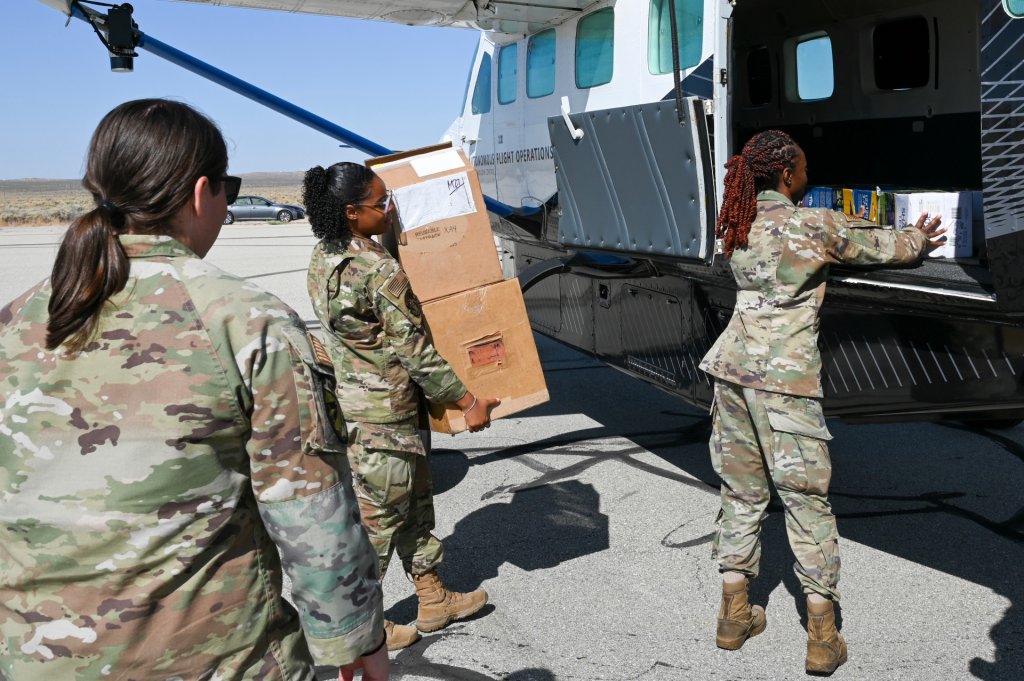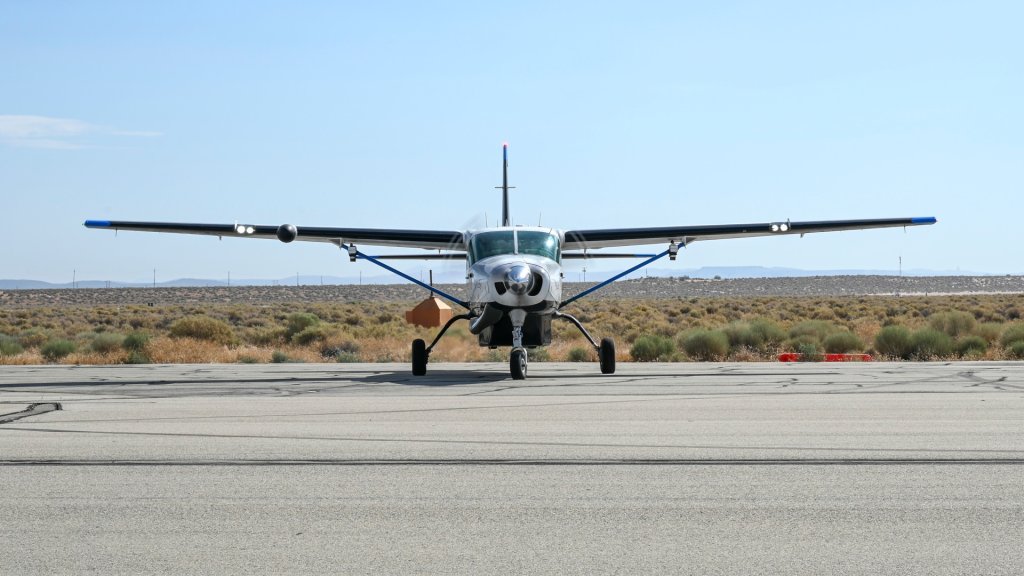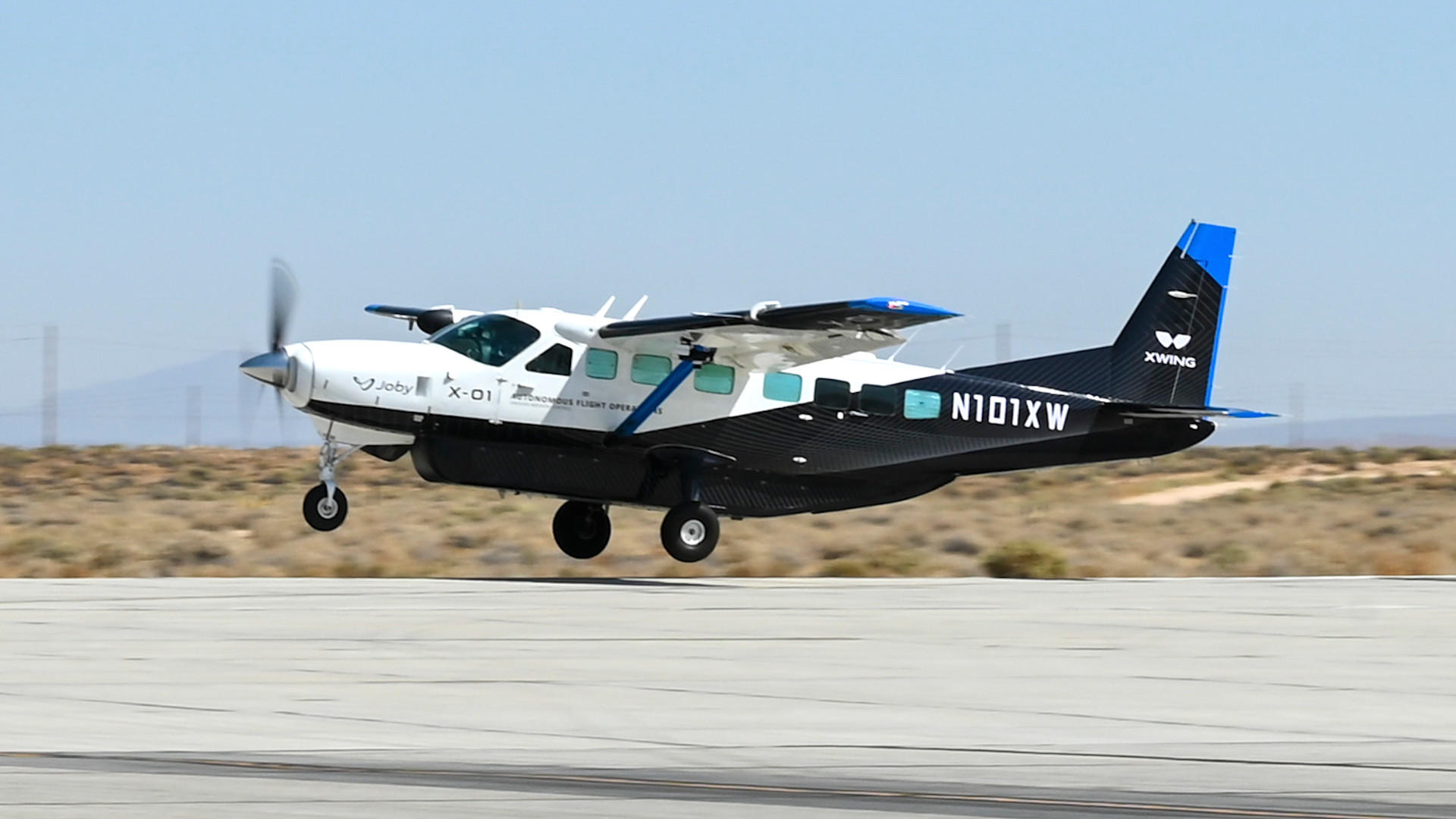A Cessna Model 208B Grand Caravan converted into a cargo drone was among the participants in a recently concluded U.S. Air Force-led large force air combat exercise focused on preparing for a potential future conflict with China. Uncrewed cargo aircraft could be key during a high-end fight in the Pacific, where friendly forces are expected to be widely dispersed to help reduce their vulnerability to enemy attacks. It’s also an area where the U.S. military is increasingly lagging behind its Chinese counterparts.
California-based autonomous aviation startup Xwing crafted the uncrewed Grand Caravan that was employed at Bamboo Eagle 24-3, which ran between August 2 and August 10, as you can read more about in our past reporting on the exercise. This was the latest iteration of Bamboo Eagle and involved aircraft flying from multiple locations in California. The first of these exercises, which reflects the U.S. military-wide shift in focus toward the Pacific and a possible major conflict there with China, occurred back in January. You can learn more about Bamboo Eagle in this past War Zone feature.

Details about the contributions of Xwing’s converted Cessna 208 to the exercise are limited, but the semi-autonomous plane has been flying since 2020. As of January, the aircraft, which carries the U.S. civil registration number N101XW, had “flown more than 500 autonomous flight hours across 250 flights” and “data collected from those test flights show it can fly roughly 1,150 miles with 1,200 pounds of cargo,” according to the Air Force. Cessna, now part of Textron, says on its website that a standard crewed Grand Caravan has a “useful load” of 3,305 pounds, but range data on the company’s official website shows the aircraft’s range drops to below 300 nautical miles with a full load.

“The person that is in the ground floor [control] station is not flying the airplane, that person is choosing the destination and is talking to air traffic control,” Maxime Gariel, Xwing founder and CTO, said of N101XW’s semi-autonomous capabilities earlier this year, according to Air & Space Forces Magazine. “So there are no flying skills.”
The operator does need to be “somebody who knows about aeronautical decision-making, so if I send this airplane, am I sending this airplane into a very dangerous environment or not?” Gariel added. “Am I good to let the airplane enter the runway, for instance? It’s really low training.”

Xwing has been under contract with the Air Force since last year specifically to “conduct autonomous flight trials and demonstrate the capability in an operationally relevant environment” as part of a project called Autonomy Prime. The Air Force Research Laboratory’s AFWERX technology incubator is leading the Autonomy Prime effort. In June of this year, Joby Aviation, a company that has been primarily focused on the development of electrically-powered vertical takeoff and landing capable aircraft, acquired Xwing’s autonomy division.
Xwing’s N101XW, as well as another Cessna 208 converted for uncrewed operation by a different company, Reliable Robotics, both participated at Exercise Agile Flag 24-1, which ran from January 26 to February 1 of this year. Demonstrating expeditionary and distributed concepts of operations the Air Force refers to collectively as Agile Combat Employment (ACE) was a key focus of both Agile Flag 24-1 and Bamboo Eagle 24-3.

At its core, ACE is centered on irregular and unpredictable deployments to disparate operating locations, including far-flung sites with limited infrastructure, to disrupt an enemy’s targeting cycle and reduce vulnerability. ACE is part of a broader U.S. military-wide trend toward more distributed operations, which is increasingly seen as essential for succeeding in any future high-end fight, especially in the Pacific against China. The U.S. Marine Corps has been notably overhauling its entire force structure around its new expeditionary and distributed concepts of operations.
Though small compared to the Air Force’s current fleets of cargo aircraft, something like an uncrewed Cessna 208 could still be a useful component of the future distributed logistical ecosystem that will be needed for concepts like ACE work. Even relatively small cargo deliveries can be essential to sustaining forward-deployed forces.
“There were … thousands, maybe, of C-47s, and they were all over the Pacific [during World War II,” Gen. Kenneth Wilsbach, then head of Pacific Air Forces (PACAF), the Air Force’s top command in the region, noted during a talk back in 2022. “They weren’t fast, but they can carry a lot, and they tackled the logistics problem of the Pacific by having a lot of tails to … move equipment. … it got there at 120, maybe 150 knots … [but] it worked.”
“We could have something like that for ACE, where you don’t have to have it going 500 knots,” but the logistics effort also wouldn’t “eat a lot of tail numbers to be able to get the small bits of equipment and pieces to the various spots that we intend to deploy from,” Wilsbach, who is now head of Air Combat Command, noted at that time. He also pointed out that these future airlifters could be uncrewed.

“‘Can I get cargo forward into a high-threat environment?’ but also: ‘Can I get cargo forward to a maneuvering unit that doesn’t have a runway from which I can operate?’” now-retired Gen. Mike Minihan, then head of Air Mobility Command (AMC), also asked rhetorically in an interview with Aviation Week last year. “Does it have to be manned? Can it be unmanned? Does it have to be 10,000 pounds or 5,000 pounds [payload capacity-wise]? Can I do vertical lift? Can I do it on an airship [or] a slow-moving low-altitude blimp? There’s a lot of opportunity when it comes to how you approach that.”
“This technology has huge applications in the near-term for dispersed logistics and supports our ACE concept,” Air Force Maj. Thomas Davis, PACAF’s Future Capabilities branch chief, also said after an Agility Prime demonstration in January. “Autonomous technologies would also help alleviate some of the Air Force’s manpower shortages.”
At the same time, the U.S. military isn’t the only party looking at how a future high-end fight in the Pacific might unfold through this kind of logistical lens. China’s People’s Liberation Army is already presented with the challenges of supporting a large number of remote facilities, including a constellation of island outposts in the hotly contested South China Sea.
On top of that, the surge in the development of uncrewed cargo aircraft within China’s aviation industry unlike anything that has been seen yet in the United States. Just this week, Chinese drone maker Tengden announced the maiden flight of a new design with a stated payload capacity of around 4,410 pounds (2,000 kilograms), which is greater than the Cessna 208’s stated “useful load.” Tengden had previously unveiled a smaller design with a 3,000-pound payload capacity. In June, China’s state-run Aviation Industry Corporation of China (AVIC) also disclosed the first flight of another new cargo-carrying drone, the HH-100, which it said had a payload capacity of up to 1,540 pounds (700 kilograms).


A key factor here is current U.S. domestic airspace regulations that impose significant restrictions on where and when uncrewed aircraft can operate. The War Zone just recently highlighted this reality after the first example of Scaled Composites Model 437 aircraft emerged with a cockpit. The Northrop Grumman subsidiary and its parent company had previously described the design as being completely uncrewed.
In contrast, Chinese aviation authorities have been actively loosening restrictions to promote uncrewed cargo aircraft developments ostensibly focused on the commercial sector, but which have clear military potential.
N101XW’s participation in Bamboo Eagle 24-3 underscores the U.S. military’s interest in uncrewed cargo aircraft, especially to support future expeditionary and distributed operations in the Pacific. At the same time, it highlights how limited work in this field remains in the United States compared to its chief global competitor China.
Contact the author: joe@twz.com
